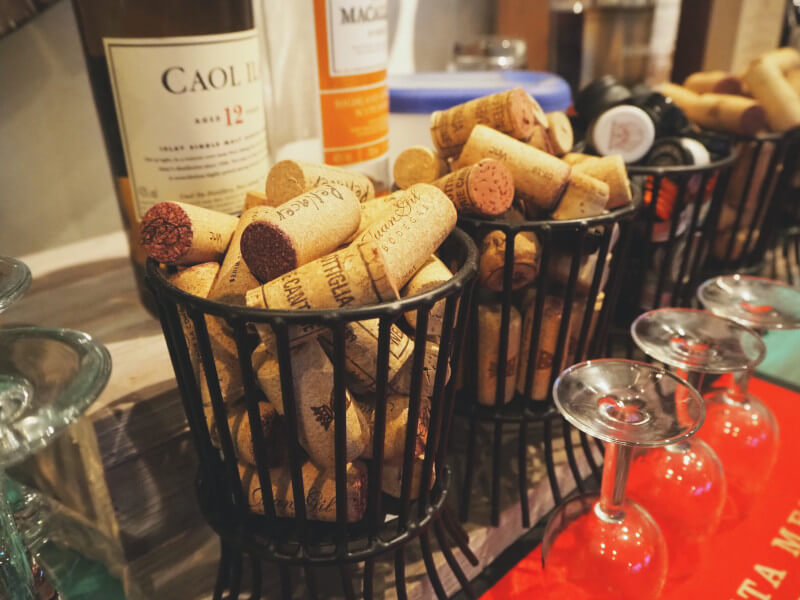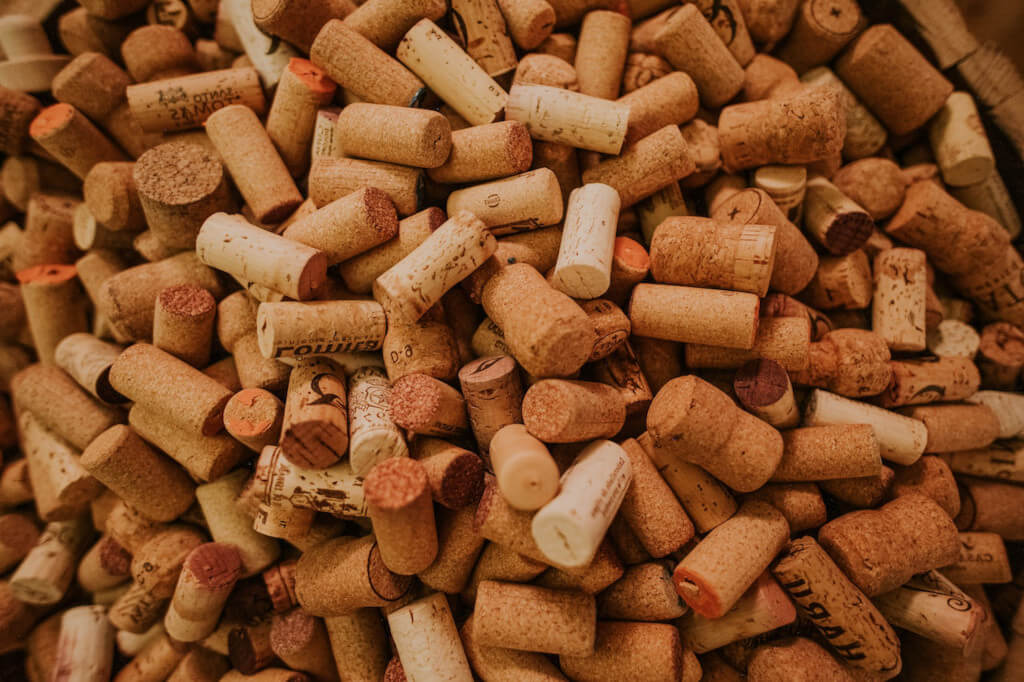When you open a bottle of fine wine and are met with a musty, moldy aroma, your first thought might be, “This wine is corked.” But what about when you open a bottle of your favorite whisky? Can whisky also suffer from being “corked”? Let’s look into the science behind this phenomenon and see if the concept truly applies to the world of distilled spirits.
For starters, what does “corked” even mean? In the wine industry, a corked wine does not have bits of cork floating in it, but rather one that has been contaminated by a compound called 2,4,6-trichloroanisole (TCA). This compound can develop when naturally occurring fungi (often found in cork) come into contact with certain chlorides found in sanitizing agents. Even in minuscule amounts, TCA can greatly affect the aroma and flavor of wine. Now, the crux of the matter: Does this concern transpose to whisky?
1. The Science of TCA in Spirits
Whisky, by its very nature, is a different beast from wine. Distilled spirits have a much higher alcohol content and are less acidic, two factors that influence how TCA might present itself. While TCA contamination can occur in any bottled beverage, the impact of TCA on whisky is less pronounced than on wine due to the dominant and robust flavors of the spirit.
However, that doesn’t mean your whisky is entirely safe from cork taint. If you’ve ever detected a slight moldy or damp cardboard aroma in your dream, it might be TCA at work. However, given the complexity and intensity of flavors in most whiskies, many drinkers might not even notice a minor TCA contamination.
2. How Whisky Bottling Differs
Unlike wine, which often has direct contact with its cork, whisky bottles tend to have a plastic or wax seal between the cork and the spirit. This barrier minimizes the whisky’s contact with the cork, reducing the risk of TCA contamination.
3. Has It Happened Before
When it comes to whisky, especially the finer, more expensive bottles, the expectation is nothing short of perfection. But just like with any artisan product, anomalies do arise, and it’s within these rarities that debates heat up.
The Tale of the Limited-Edition Release
One such incident involved a limited-edition release from a renowned Scottish distillery. As buyers eagerly uncorked their bottles, a few reported a distinct and unexpected mustiness. Social media was soon abuzz, with some defending the distillery, attributing the scent to the whisky’s unique profile, while others were convinced of TCA contamination. The distillery, prioritizing its reputation, offered to exchange the bottles, even though they couldn’t definitively confirm the presence of TCA.
Whisky Forums and the Mystery of the Musty Bottle
Dedicated online forums, where whisky enthusiasts discuss and dissect every dram, have seen their fair share of cork taint debates. In one memorable thread, a user described a prized bottle of American bourbon that had a persistent odor of wet cardboard. Fellow forum members chimed in with their theories: everything from the possibility of TCA to the storage conditions of the bottle. Some even speculated if the whisky had been stored near moldy barrels in the rickhouse.
Tasting Events and the Divide
At whisky-tasting events, where numerous bottles are opened and sampled, the opportunity for detecting a corked bottle increases. At one particular event in Europe, a rare Japanese whisky was on offer. As participants took their first whiffs, a divide emerged. Half the room detected the unmistakable mustiness associated with cork taint, while the other half felt the aroma was more in line with the earthy, umami notes often found in Japanese whiskies. The debate continued long after the event, with no clear consensus reached.
The Expert’s Verdict
Even among industry professionals, the presence of cork taint in whisky can be contentious. A notable example involved a blind tasting organized for a panel of experts. One bottle, in particular, became the subject of much discussion. While some panelists were convinced of its corked nature, others believed the unusual profile was due to experimental cask aging. Post-event analysis revealed the whisky was free from TCA, but the debate underscored just how subjective the detection of cork taint can be.
4. Mitigating the Risk

Distilleries, aware of the potential for TCA contamination, often take measures to ensure their corks are of the highest quality. Some even opt for synthetic corks or screw caps, eliminating the risk of natural cork taint. Distilleries have upped their game even further in ensuring their products remain untainted. Here’s a deep dive into the various proactive measures they employ:
- Stringent Cork Quality Control: Before corks even reach the bottle, they undergo rigorous testing. Modern-day technology allows distilleries to inspect and analyze cork batches for TCA and other unwanted compounds. Only those who pass these tests are cut.
- Alternative Cork Materials: Some distilleries are making the switch to alternative cork materials, like Diam, which is essentially natural cork that’s been stripped of TCA and other potential contaminants through a CO2 cleaning process. This ensures the aesthetic appeal and feel of natural cork without the risks associated with it.
- Transition to Screw Caps and Synthetic Corks: Taking a page out of the wine industry’s book, several distilleries are now favoring screw caps or synthetic corks. Both options completely remove the risk of TCA contamination. Synthetic corks, made from plastic compounds, can mimic the sealing properties of natural cork, and screw caps offer an airtight seal, ensuring the whiskey remains uncontaminated.
- Educating the Supply Chain: Recognizing that contamination can happen anywhere along the production line, distilleries frequently collaborate with their suppliers, ensuring they too are aware of best practices to prevent TCA contamination.
- In-House Training: Distillery staff undergo regular training to detect and identify cork taint. These sessions ensure that, from the production line to quality control, there’s a high level of awareness and vigilance against potential TCA contamination.
- Innovative Bottle Designs: Some distilleries are experimenting with bottle designs that minimize the contact surface area between the whiskey and the cork. By reducing this interaction, there’s less opportunity for any TCA present in the cork to leach into the whiskey.
- Regular Batch Testing: Even with all these precautions, regular batch testing remains crucial. Samples from each batch are routinely analyzed to ensure no contaminants, including TCA, have found their way into the whiskey.
You, as a consumer, can also play your part by storing your whisky bottles upright (to minimize liquid-to-cork contact). This can further reduce the potential for cork taint.
5. The Verdict
So, can whisky be corked? Technically, yes. The presence of TCA is not exclusive to wine. However, due to the nature of whisky production, bottling, and the spirit’s robust profile, the chances of coming across a noticeably corked whisky are relatively slim.
For you, as a whisky lover, the key lies in trust. Trust in the distilleries to uphold rigorous quality standards, trust in your retailer to provide authentic products, and trust in your senses. If something smells or tastes off in your dram, it’s worth considering the possibility of TCA. But always remember, the world of whisky is vast and varied. One off-putting bottle shouldn’t deter your enthusiasm or your curiosity.
While the science suggests whisky can, in theory, be corked, the actual impact of such an occurrence on your drinking experience is likely minimal. Still, it’s always worth being informed and knowing what to look out for, ensuring each sip you take is as delightful as intended.

